It’s never a dull week in the world of New York public health. This week we’re reporting on the first West Nile Virus cases of the season, increasing COVID-19 levels in NYC, measles in New Jersey, the first peek at air quality data from congestion pricing, and celebrating a couple of public health wins. Let’s jump in.
West Nile Virus in humans in upstate New York
This week, New York State confirmed its first two human cases of West Nile Virus (WNV) in 2025, reported in Erie and Onondaga Counties. While the numbers are still low, it’s an early sign the season is heating up.
Mosquito surveillance also found two new WNV-positive mosquito pools (groups of mosquitoes “pooled” for testing) in Rockland and Suffolk Counties.
NYC has reported 52 WNV-positive mosquito pools so far (including Richmond, the Bronx, and Queens).
There have been no WNV detections in horses or blood donors.
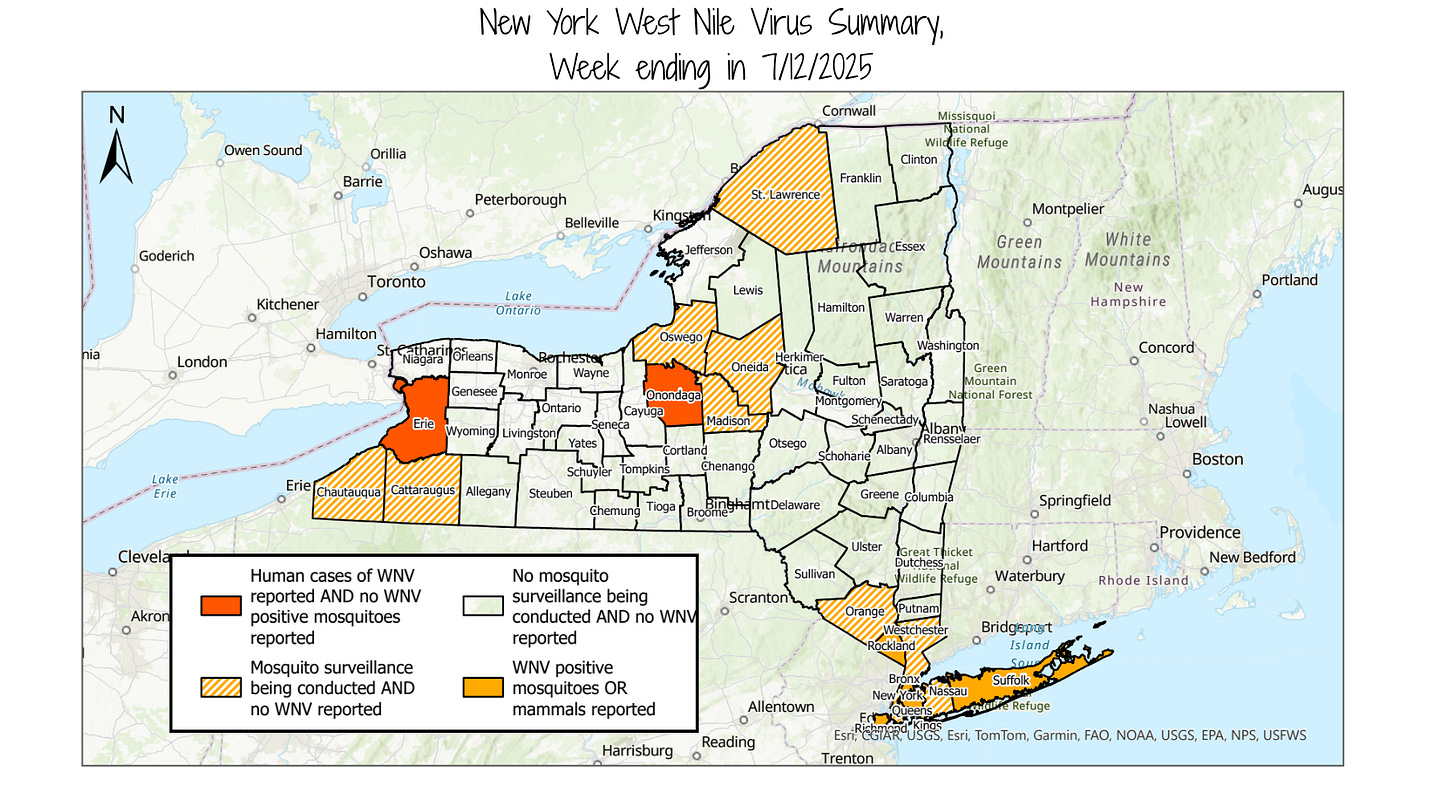
Mosquitoes in NY can also carry the virus that causes Eastern Equine Encephalitis, (EEE) which is rarer and usually more serious than WNV. So far in 2025, they have only detected EEE in mosquitos in Onondaga County.
While risk to the general public remains low, now’s the time to double down on prevention. WNV and EEE are spread by mosquitoes—not people—so it’s all about bite protection:
Wear repellent (DEET, picaridin), especially at dawn and dusk. If you are using sunscreen, apply sunscreen first and insect repellent second.
Cover up: wear long sleeves if it’s not too hot.
Dump standing water (think flower/plant saucers, buckets, fountains, toys that have been sitting outside, etc.) to eliminate mosquito habitats.
COVID is increasing in NYC
Wastewater data is showing that COVID-19 is starting to increase in New York City, signaling that the summer surge is underway.
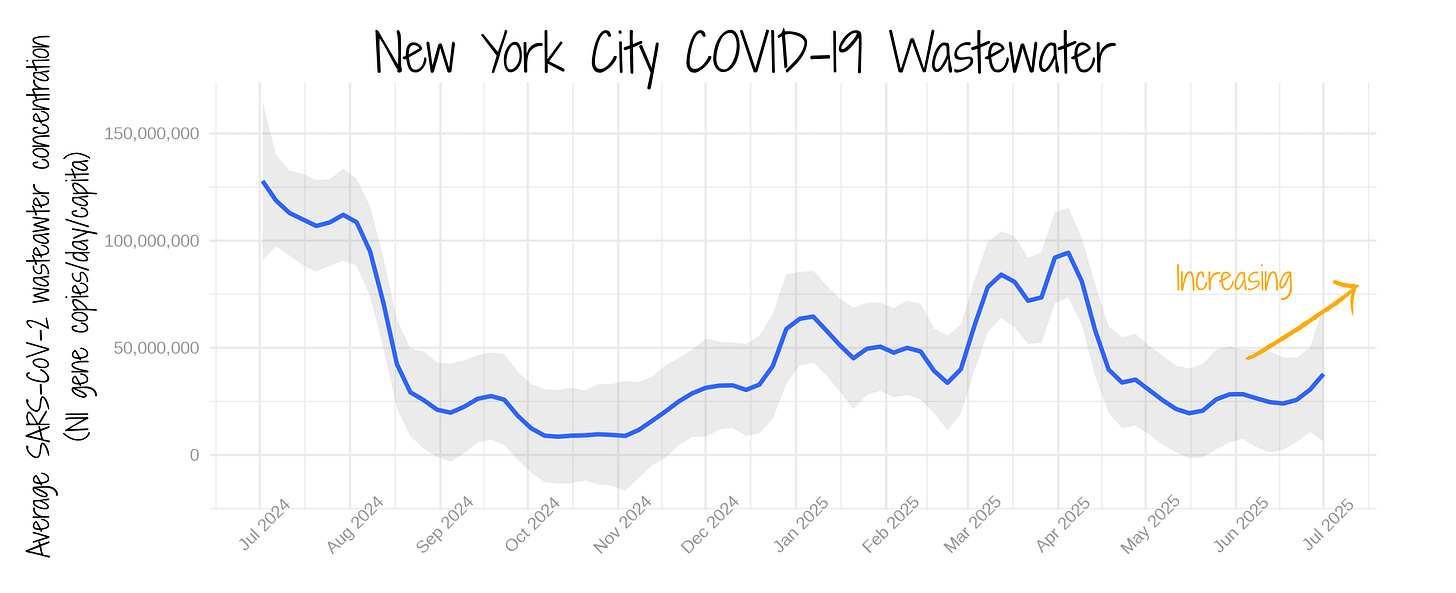
On average, COVID-19 levels remain low across the rest of the state.
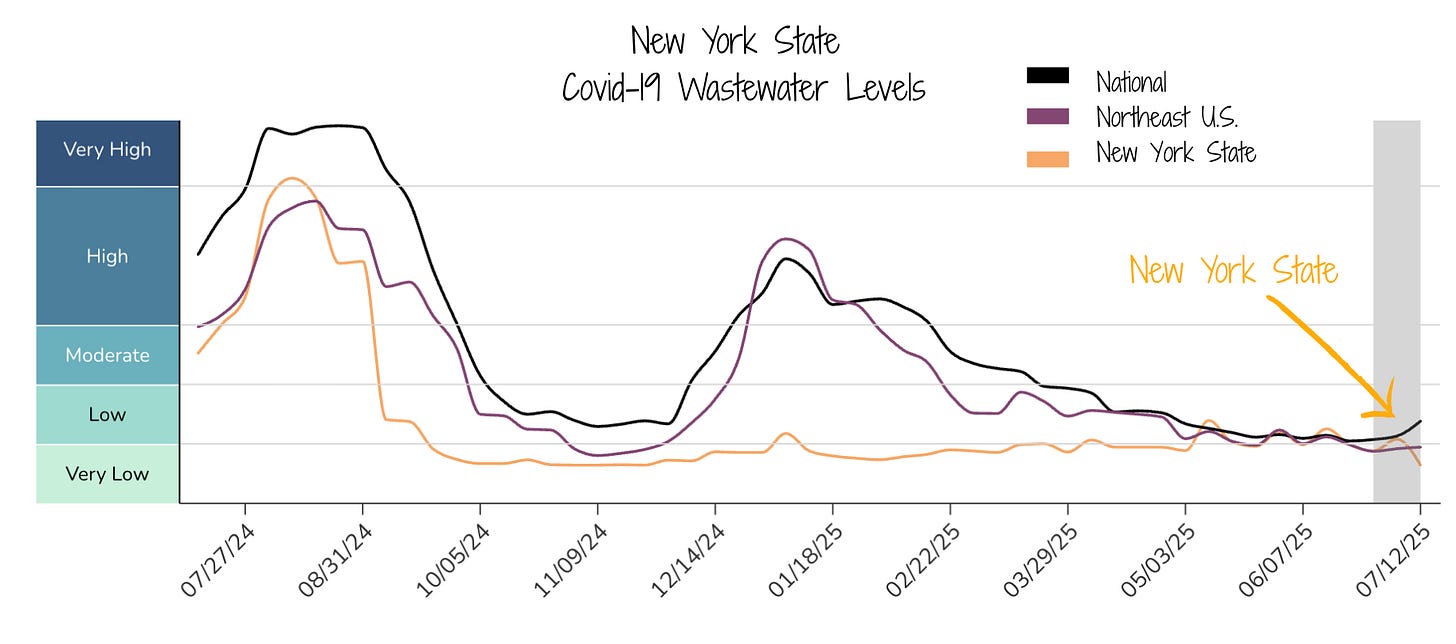
We are noticing some hot spots though. Onondaga County has a very high COVID-19 wastewater level, while Warren County is high. And we’re starting to see this reflected in the increasing number of hospitalizations in New York. The good news is that they are still relatively low.
Update on New Jersey measles
The New Jersey health department is now reporting 2 measles cases in the state, though they are unrelated to each other. The cases are in Ocean County (which we highlighted last week) and in Hudson County.
Anyone who visited the following locations during the specified times may have been exposed. Potentially exposed people should contact a healthcare provider if they develop any measles symptoms, which usually start like a cold and progress to a rash.
If you do develop symptoms, it’s important to call your doctor or clinic before you visit in person so special precautions can be taken to prevent further spread. Reminder—if you are fully vaccinated, you are well protected.
Initial look at air quality following congestion pricing
Congestion pricing in Manhattan has been in effect since January. (We wrote about it here.) Last week, a report shared a first look at air quality data since the program’s start.
The report looked at data for fine particle air pollution (PM2.5) from locations inside and outside the tolling zone, three months before the tolling started (from October to December 2024) and three months after tolling began (from January to March 2025).
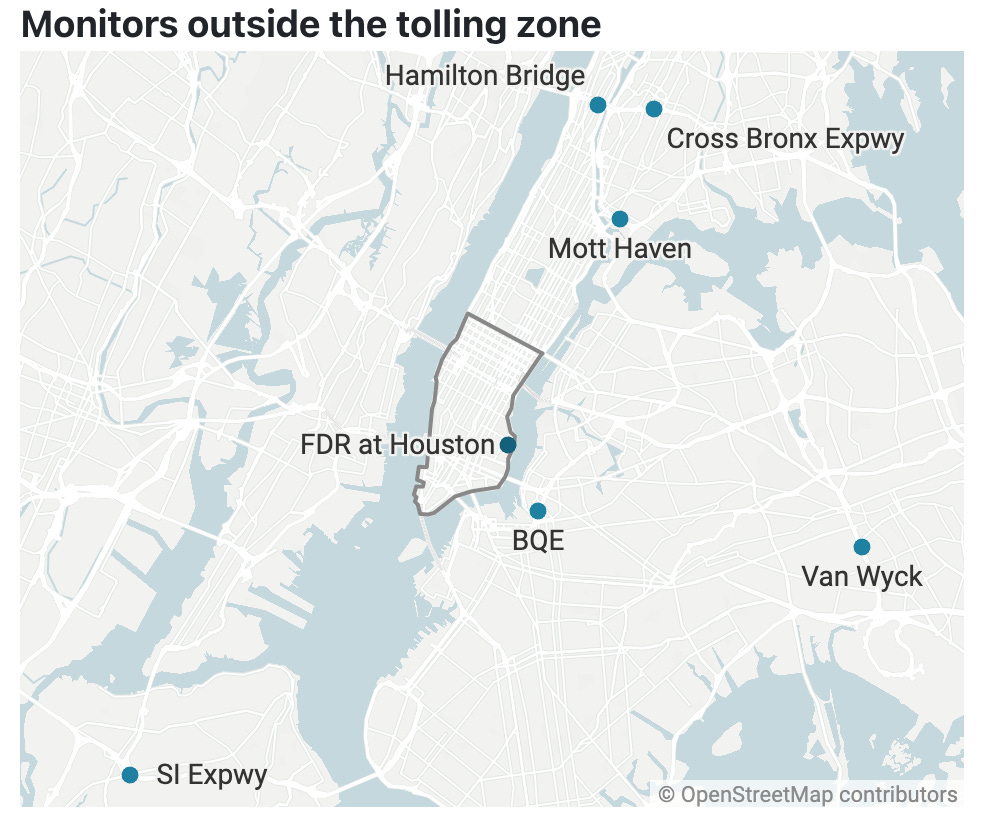
PM2.5 is important to track because long-term exposure increases risk of lung and heart disease, and short-term exposure increases risk of asthma.
Inside the zone: PM2.5 held steady or ticked down.
Outside the zone: Most monitors mirrored that trend, suggesting traffic—and pollution—aren’t simply shifting elsewhere. The lone exception, Hamilton Bridge, registered a rise even though traffic counts barely budged, so the cause remains unclear.
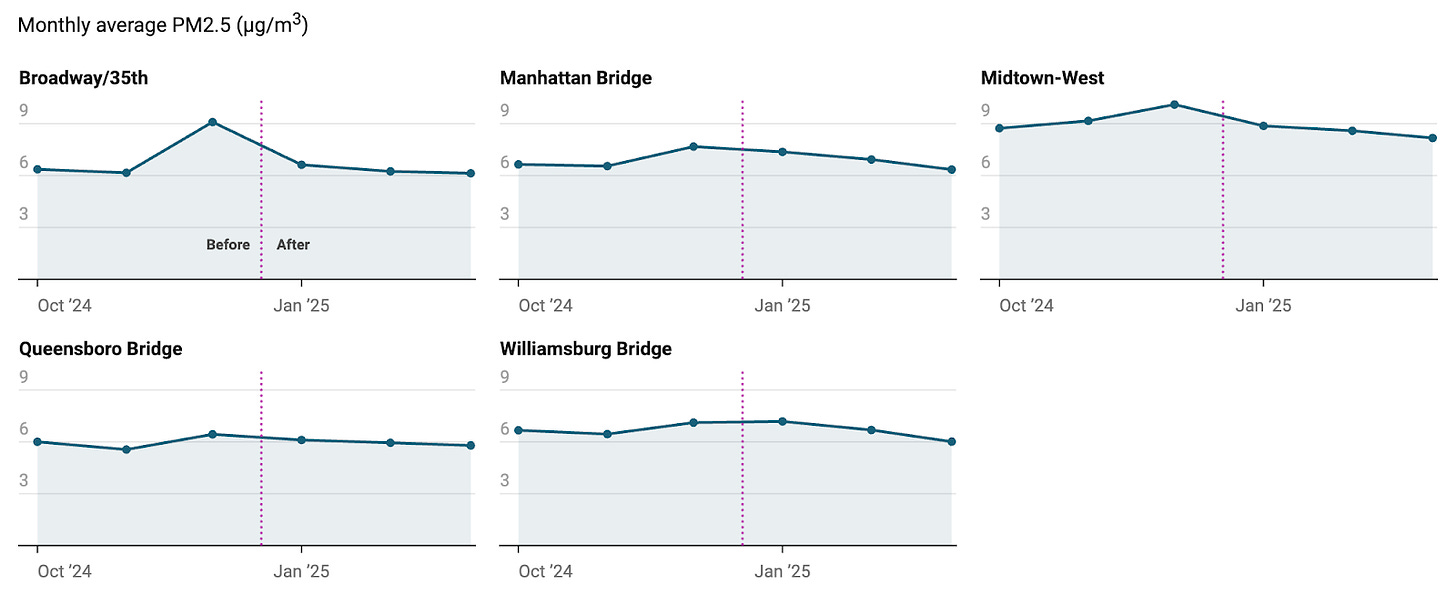
The initial data looks good, but it’s for a short period of time, and PM2.5 is heavily influenced in the winter by heating and boiler use. We’ll need more data to draw conclusions on how effective this program is at reducing air pollution in NYC.
For some good news, here are some NY public health wins:
DuPont settlement
After a decade-long legal battle, the chemical maker DuPont agreed to pay a $27 million settlement to the 3,000 person town of Hoosick Falls for contaminating local drinking water with PFOA, a “forever chemical” linked to cancer that lingers in the body for decades.
The suit began in 2016 when residents of Hoosick Falls found PFOA levels in their blood more than 30 times the national average. PFOA was used to make Teflon at a Hoosick Falls facility.
Following the finding of drinking water contamination, the manufacturing facility was declared a superfund site by the EPA. As part of the remediation, Honeywell and Saint-Gobain (other companies involved) agreed to pay $45M, including funding the replacement of all drinking water lines in Hoosick Falls. The drinking line replacement was completed this March.
NYC doula program met its goals
NYC Mayor Adams and Health Commissioner Morse announced last week that several milestones had been reached for the NYC Citywide Doula Initiative. The program provides free access to home visits and doula support for moms and parenting families. A doula is a professional, trained childbirth assistant who provides non-medical support.
So far the program has:
Provided doula services to 1,128 new clients in 2024, exceeding its goal of 1,000.
Served 3,245 people over the last three years.
Not had a single maternal death among program participants.
Seen a 25% increase in doula coverage for NYC residents since 2022.
Served a large proportion of women of color, shelter residents, and non-English-speakers.
Families are eligible for free doula services through the program if they live in areas hit hardest by COVID-19 and other health and socioeconomic disparities.
Bottom line
You’re all caught up on New York public health news. See you next week!
Love,
Your NY Epi
Dr. Marisa Donnelly, PhD, is an epidemiologist, science communicator, and public health expert. This newsletter exists to translate complex public health data into actionable insights, empowering New Yorkers to make informed and evidence-based health decisions.






What about the measle case upstate with exposures at Saratoga Hospital and Albany Medical Center?